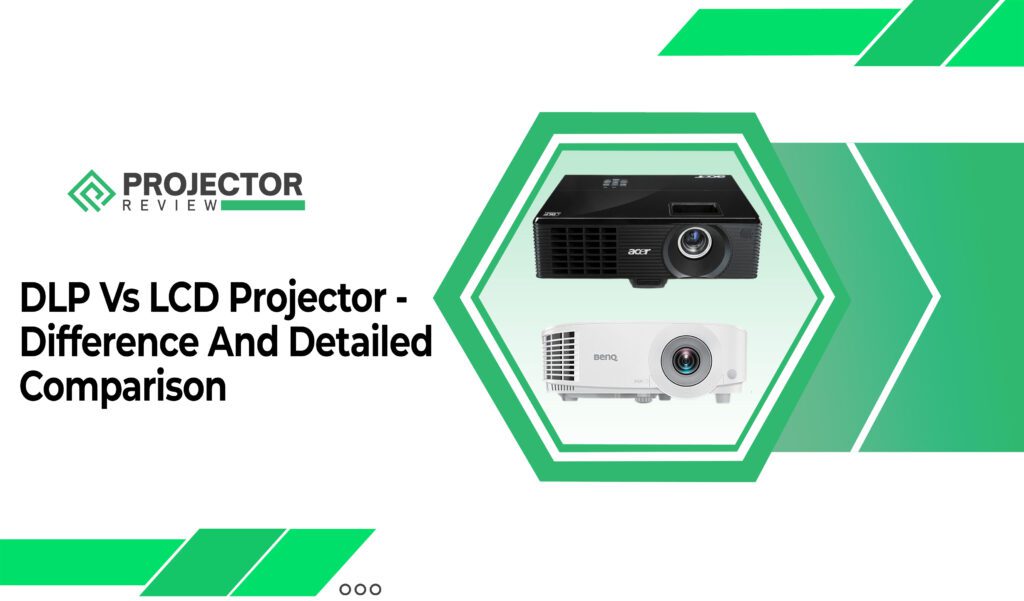If you are new to projectors, you probably think that all screens are almost the same and that the projector itself determines the quality of the image. While it’s true that the projector is the most important part of the equation, what kind of surface you project the image onto will also affect your image.
Before, people only had one option to choose from, white projection screens. Today you have more options with the introduction of gray projection screens.
But the question arises: “Which is better?” Should you get white or gray projector screens? We’ll give you an answer to this question in this article by comparing both screen features, price Pros, and Cons, etc.
The question of a gray or white projection screen and which one gives you the best viewing experience really depends on two factors: the lamp in your projector and the settings for your viewing environment. We will discuss more both screens in this article.
Does the Projector Work On a Black Wall?
Using a black wall does work for projects, but if a wall is too dark it can result in a blurry image from the projector. However, many real projection screens are colored very light gray, so one could think that a gray wall could replace a canvas.
The black finish simply takes the concepts that apply to gray surfaces a step further. The black of the projection surface improves the black level even more than on a gray surface. The black screen absorbs more ambient light, so darker blacks look better than a gray screen when the ambient light increases.
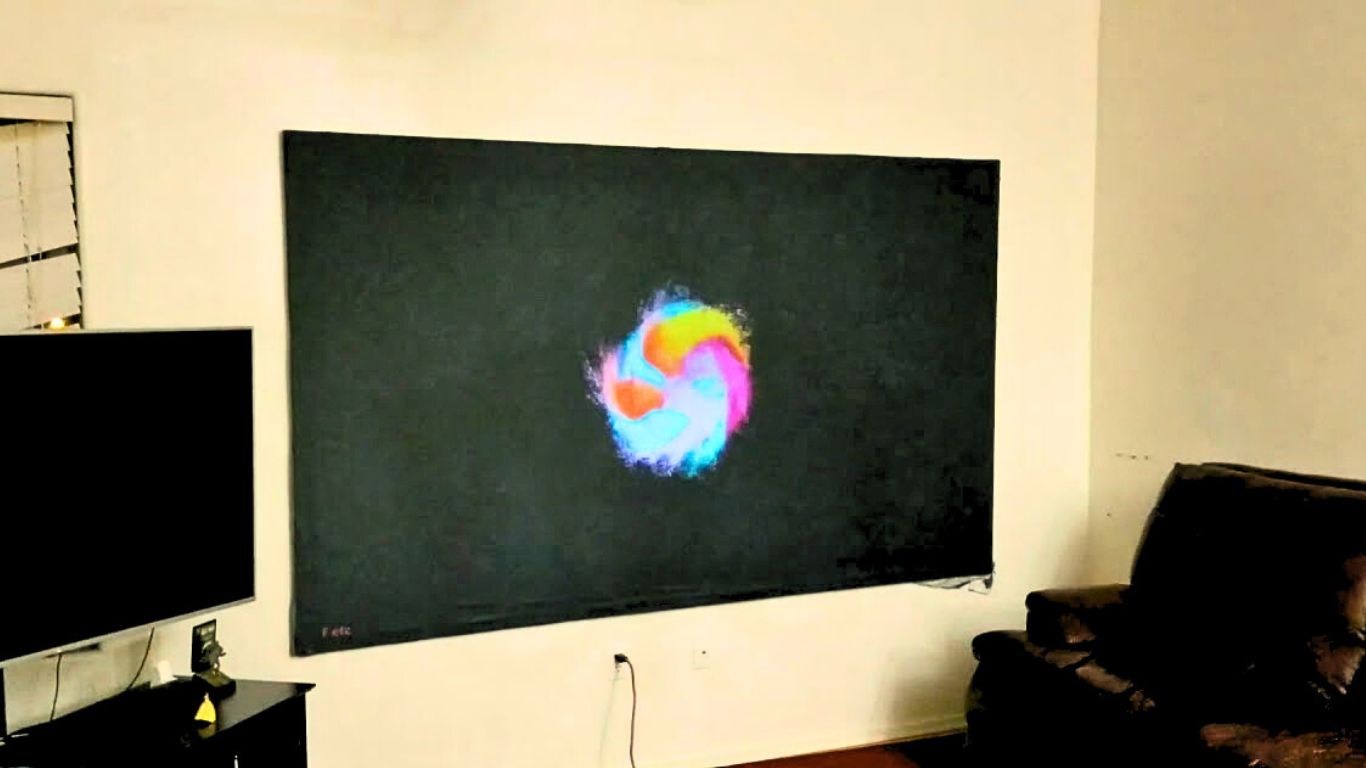

As the darkness increases, the contrast between black areas and other colors is increased. A black screen can prevent some, but not all, of the dull colors, that a gray screen produces. The general rule is The more ambient light you have, the darker the required projection surface.
Grey vs. White Projector Screen – What’s The Difference?
So, you are going to set up your projector. And you have to choose between two projector screens: grey and white projector screens. Here we are going to compare both the Grey and white Projector Screens.
Can You Project On A Grey Screen?
A projector will work on grey or black walls, particularly if there’s ambient light in the viewing area. The more ambient light in the room, the higher the light output you’ll need from your projector. Yet, the wide availability of both grey and black projection screens suggests it’s possible.
Grey Screen Projector
In 2001, Stewart Filmscreen’s Grayhawk product first introduced the concept of the gray screen. After that, they sold well in stores and have enjoyed great popularity ever since.
They were particularly useful in overcoming the contrast problems faced by early digital video projectors in the days of VGA connectors and before HDMI, DVI, and DP connectors became popular in the mid-2000s.
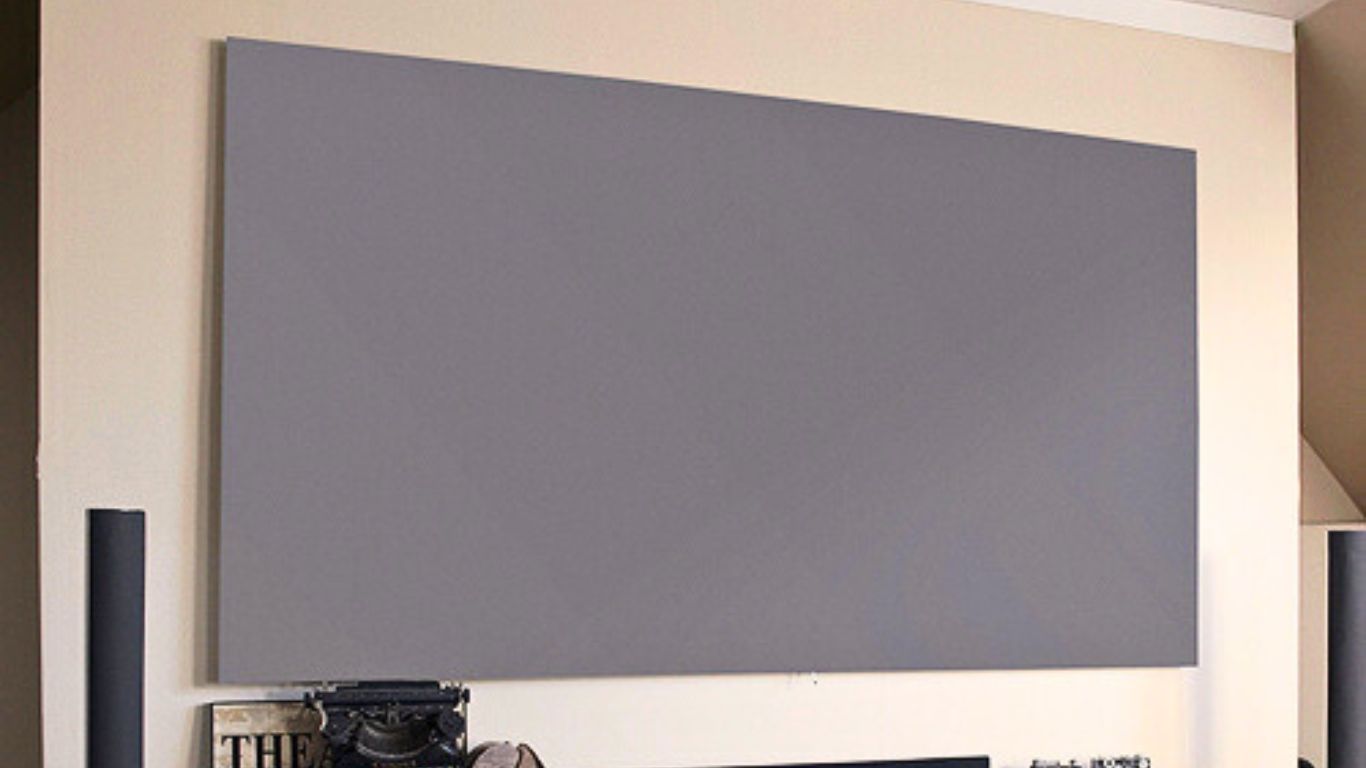

Contrast
Higher contrast projectors transmit the clearest, sharpest images, preserving the darkest colors while keeping the lighter tones more vivid. Top-end projectors are designed to perform well on white screens almost regardless of lighting conditions.
Gray projection screens are also known as high-contrast screens and are designed to absorb ambient light. The more light is absorbed, the less it bounces off the screen.
Environment
Another important comparison between gray and white projection screens is their surroundings. If you can’t afford the luxury of eliminating all light sources, gray screens are your best option. Again, this is because gray absorbs ambient light. You can see great picture quality no matter how bright the room is.
Price
As with any investment, you need to set a budget, same goes for projection screens, how much are you willing to spend on it? If you do a head-to-head comparison, you will find that gray and white screens cost about the same, but when you factor in everything else, that is where the price difference lies.
Gray screens are more budget-friendly. You can use them for a more informal viewing experience. Gray projector screens also work great with cheap or old projectors. The shortcomings of old or cheap projectors won’t affect gray screens too much. So you don’t need expensive projectors with gray screens.
Plus, you no longer have to worry about light avoidance with gray screens. You can use it anywhere, including in rooms with lots of sunlight or lots of fluorescent lights. If you only have a budget for a good screen, then you should reach for the gray projector screens.
Advantages
- The greatest battle a projectionist has to fight is against the light; Any ambient lighting can change the clarity of the images. If you’re not fortunate enough to have a completely dark room, gray screens will absorb poor lighting, making up for any loss of image quality and contrast.
- Older and cheaper projectors benefit from gray screens as they compensate for low contrast ratios.
- As explained above, you don’t need to upgrade to a high-spec projector to get great display results, which makes it economical. A simple projector and gray screen make all the colors, especially the darker tones; stand out for a more affordable price.
Disadvantages
- They are not as available as the white screen.
- No additional special functions, it just behaves like a screen.
You won’t get a better color than a white screen. You may see a gray, cloudy hue on the screen
White Screen Projector
The audiovisual or A / V industry has used the white screen as the standard for projectors since projectors for films, slides, and slide shows have become important for home, school, and office.
It’s also the standard projector used for mirroring home videos and digital computer monitors, from VHS to BluRay. White is the absurd color for displays and remains the standard due to its color fidelity and brilliant white tones and offers the most generous viewing angles of all display types.
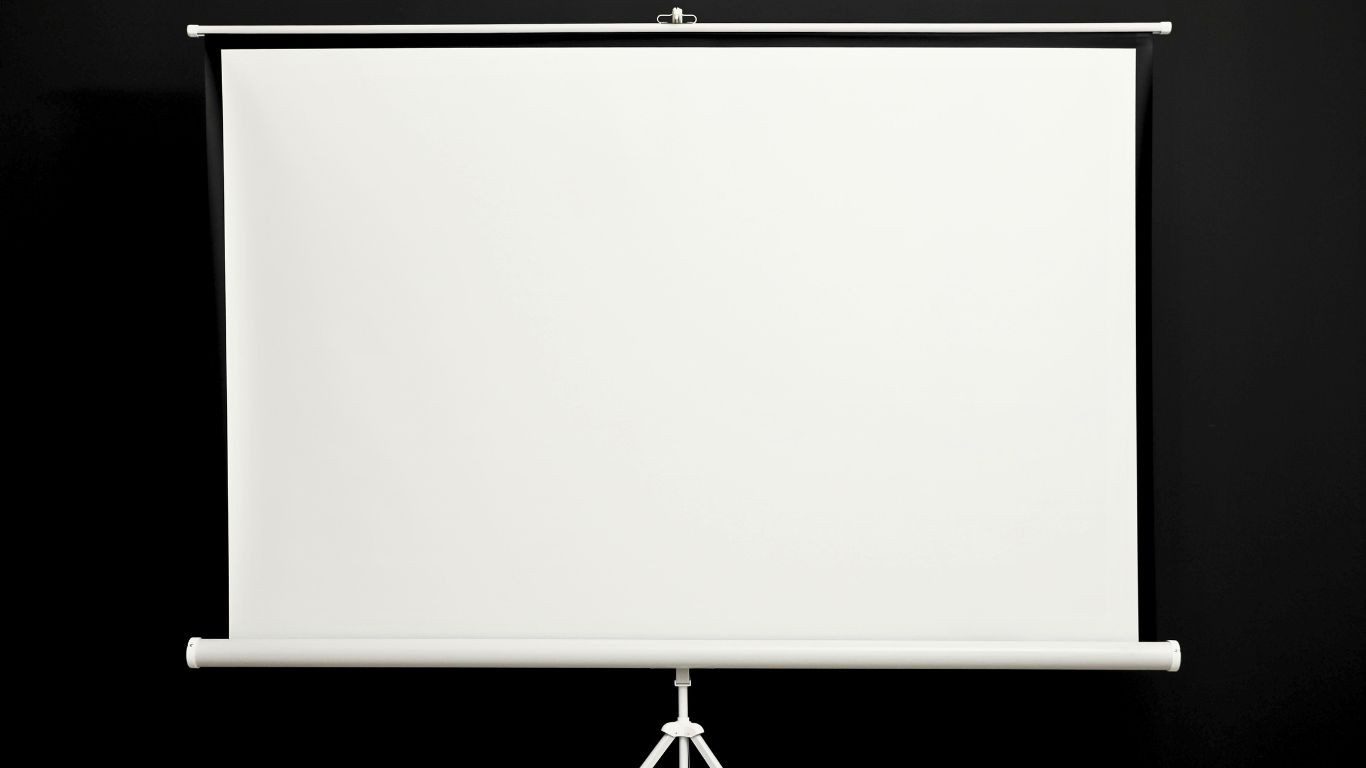

Contrast
In comparison, white projection screens reflect too much light, which weakens dark colors and lowers the contrast and also loses the bright white colors of the image.
White projection screens reflect light and dull dark colors. Contrast appears low until white colors become negligible and light colors appear faint.
Environment
A white canvas works best when the room is completely dark. It is not enough to turn off all the lights. It is necessary to seal the windows, have dark walls, and remove all sources of light. Without light, the white screen is ideal. You get the best of the best from high-end projectors with more realistic images.
Price
You’ll have to spend more on white projection screens. Why?
To get the most out of white screens, you need high-end projectors. While screens cost the same, you have to pay more for a better projector to get the best image quality. You can see why it costs you so much more.
Since white screens work best in a dark room, you may need to pay for them too. You need a fully light-controlled room with dark walls, ceilings, and furniture. If you don’t have that, money can be gotten. If you’re looking to spend a lot of money anyway, get the white screens.
Advantages
- In ideal lighting conditions, the clarity that a high-quality projector offers can hardly be surpassed. The images will be sharp and clear, just as the filmmaker intended.
- Most modern projectors have a contrast ratio of 3000: 1, enough to project well on a white screen.
Some white screens have an innovative silver coating to block out ambient light, which can still provide images when the lights are on. - Higher availability because it has been around for a long time. A better range of sizes is more available.
- Some have sound pass-through technology that is not yet compatible with gray screens.
Disadvantages
- The slightest glimmer of light in a room can cause colors to appear washed out and the overall picture to fade.
- Best for purpose-built home theaters rather than casual viewers.
- Best compatible with high-end, high-contrast, expensive projectors.
What Can You Use For A Projector Screen?
The best thing about a projector is that it gives you a lot of versatility in setting up your room. You don’t even have to project onto a specific screen. If you are wondering what kind of projector screen you can use, you have come to the right place. Check out the DIY display ideas below. One of them could be the perfect choice for your home theater!
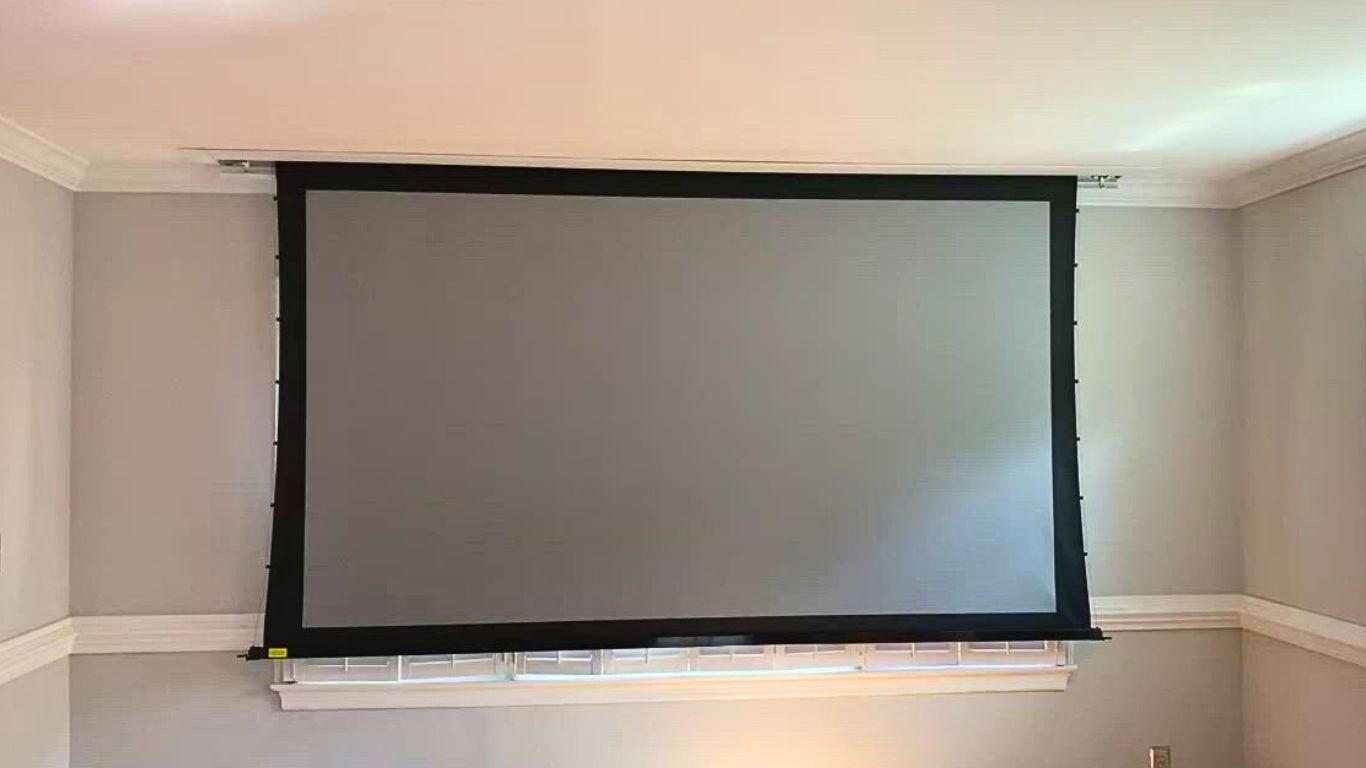

Option 1: A Blank Wall
The lowest-effort (and lowest-cost) alternative to a projector screen is to simply project straight onto the wall. Solid white walls work best; any color or pattern on the wall will affect the image projected onto it, so keep that in mind.
The texture on the wall can also alter how the image projects. Smoother is better; if the wall has a lot of texture, you may want to consider sanding it down before using it as a projector surface.
Option 2: A Clean Sheet
Most people already have sheets in their houses. If you don’t, buying one is a lot cheaper than buying a projector screen. Since you can hang a sheet anywhere, inside or out, it’s a more versatile option than a wall. Just like above, a plain white sheet works best. It doesn’t have to be a bedsheet, either. Any piece of smooth, white cloth will do the trick.
The trickiest part of using a sheet as a projector screen is hanging it properly to avoid wrinkles, folds, or movement. Depending on the thread count of the sheet, you will likely also need to put something behind the screen, whether that’s a large piece of cardboard or a few extra layers of cloth, to keep the light from shining right through.
Option 3: Projector Paint
Cost-wise, projector paint is about equal to buying a screen. With projector paint, though, you’re not limited to the screen dimensions and styles you’ll find for sale, making it a great option for custom projects.


The flip side of this is you’ll have to spend a few hours painting when you start watching. Untreated surfaces will need a layer of primer as well as two coats of paint.
Option 4: Wrapping Paper
The blank, white side of a roll of wrapping paper has a smooth, glossy surface that reflects light well. Like with projector paint, this option gives you lots of versatility.
Cut a piece of cardboard or particleboard to the size you want and tape sheets of white wrapping paper to it for an affordable custom projector screen.
The main problem with wrapping paper is that it’s not the sturdiest material. Any wrinkles or rips will be visible in your image. You can roll it up to store it like you can with a store-bought screen. It’s also not a great outdoor option, since moisture will destroy it.
White Blackout Cloth For Projector Screen
Blackout cloth is still a popular choice for budget screen builders. It’s very smooth, and flexible, covers a large surface area, and it’s inexpensive, making for a perfect mini drive-in screen!
Any piece of smooth, white cloth will do the trick. The trickiest part of using a sheet as a projector screen is hanging it properly to avoid wrinkles, folds, or movement.


Can I Use A Sheet As A Projector Screen?
Just like above, a plain white sheet works best. It doesn’t have to be a bedsheet, either. Any piece of smooth, white cloth will do the trick. The trickiest part of using a sheet as a projector screen is hanging it properly to avoid wrinkles, folds, or movement.
Grey vs. White Projector Screen – FAQs
Conclusion
So what’s better? The answer depends on your preferences, your budget, and all of that. Only you know which projector screen is best for you.
If your home theater has gone into a total blackout, meaning the walls, floors, and ceilings are dark, the windows are covered with massive blinds and the doors have curtains, then there is no reason why you shouldn’t opt for the classic white screen and enjoy the depth and precision of color.
For the casual observer or in a room where total darkness is not possible, a gray screen is the right choice. Enjoy all of the movie action in the blackest blacks and the most vivid, vibrant colors. We hope these comparisons will help you choose between gray or white projection screens

